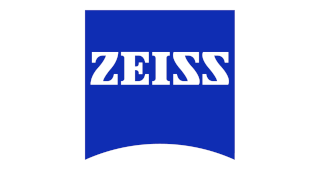Prognostic factors of postoperative seizure outcomes after epilepsy surgery
EANS Academy. Trifonov I. 10/04/21; 339073; EP08010

Dr. Igor Trifonov
Contributions
Contributions
Abstract
Background: Epilepsy surgery is effective in 30-82% of patients with drug-resistant epilepsy. However, risk factors associated with favorable and unfavorable outcomes of epilepsy surgery need to be further evaluated. This is the first assessment of the large epilepsy surgery cohort in Russian Federation.
Purpose: evaluation of long-term outcomes in the Russian cohort of drug-resistant patients with epilepsy (PWE).
Materials and methods: 271 PWE with structural drug-resistant epilepsy were operated by the neurosurgery team of Moscow State University of Medicine and Dentistry between 01.01.2014 and 31.12.2019. All patients underwent neurological and neuropsychological evaluation, seizure semiology assessment, neuroimaging and neurophysiological examination. Results of surgery were assessed according to J. Engel (1993) at 12, 24, 48 and 60 months after surgery. Risk factors, associated with favorable (Engel I-II) and unfavorable (Engel III-IV) outcomes were evaluated.
Results: In 12 months after surgery there were favorable outcomes (Engel l+II) in 69% of patients (n=148), in 24 months – 71% (n=127), in 48 months - 87,5% (n=90), in 60 months - 91% (n=32). 12 months after surgery were identified the factors of unfavorable outcomes: earlier onset of the disease (p = 0.01), multifocal (p = 0.002) and bilateral lesions (p = 0.0038). No statistics difference between age (p = 0.26), duration of disease (p = 0.9), number of seizures per week (p = 0.18), side of the lesion (p = 0.13), invasive video EEG monitoring (p = 0.46), hippocampal sclerosis (p = 0.48), MRI-positive or MRI-negative (p = 0.92). 24 months after surgery: GTCS (p = 0.0058), multifocal (p = 0.0026) and bilateral lesions (p = 0.018). At 48 and 60 months after the surgery: multifocal (p = 0.0049) and bilateral lesions (p = 0.0014).
Conclusions: The most significant predictors of unfavorable outcomes are: earlier onset of the disease, multifocal and bilateral lesions.
Purpose: evaluation of long-term outcomes in the Russian cohort of drug-resistant patients with epilepsy (PWE).
Materials and methods: 271 PWE with structural drug-resistant epilepsy were operated by the neurosurgery team of Moscow State University of Medicine and Dentistry between 01.01.2014 and 31.12.2019. All patients underwent neurological and neuropsychological evaluation, seizure semiology assessment, neuroimaging and neurophysiological examination. Results of surgery were assessed according to J. Engel (1993) at 12, 24, 48 and 60 months after surgery. Risk factors, associated with favorable (Engel I-II) and unfavorable (Engel III-IV) outcomes were evaluated.
Results: In 12 months after surgery there were favorable outcomes (Engel l+II) in 69% of patients (n=148), in 24 months – 71% (n=127), in 48 months - 87,5% (n=90), in 60 months - 91% (n=32). 12 months after surgery were identified the factors of unfavorable outcomes: earlier onset of the disease (p = 0.01), multifocal (p = 0.002) and bilateral lesions (p = 0.0038). No statistics difference between age (p = 0.26), duration of disease (p = 0.9), number of seizures per week (p = 0.18), side of the lesion (p = 0.13), invasive video EEG monitoring (p = 0.46), hippocampal sclerosis (p = 0.48), MRI-positive or MRI-negative (p = 0.92). 24 months after surgery: GTCS (p = 0.0058), multifocal (p = 0.0026) and bilateral lesions (p = 0.018). At 48 and 60 months after the surgery: multifocal (p = 0.0049) and bilateral lesions (p = 0.0014).
Conclusions: The most significant predictors of unfavorable outcomes are: earlier onset of the disease, multifocal and bilateral lesions.
Background: Epilepsy surgery is effective in 30-82% of patients with drug-resistant epilepsy. However, risk factors associated with favorable and unfavorable outcomes of epilepsy surgery need to be further evaluated. This is the first assessment of the large epilepsy surgery cohort in Russian Federation.
Purpose: evaluation of long-term outcomes in the Russian cohort of drug-resistant patients with epilepsy (PWE).
Materials and methods: 271 PWE with structural drug-resistant epilepsy were operated by the neurosurgery team of Moscow State University of Medicine and Dentistry between 01.01.2014 and 31.12.2019. All patients underwent neurological and neuropsychological evaluation, seizure semiology assessment, neuroimaging and neurophysiological examination. Results of surgery were assessed according to J. Engel (1993) at 12, 24, 48 and 60 months after surgery. Risk factors, associated with favorable (Engel I-II) and unfavorable (Engel III-IV) outcomes were evaluated.
Results: In 12 months after surgery there were favorable outcomes (Engel l+II) in 69% of patients (n=148), in 24 months – 71% (n=127), in 48 months - 87,5% (n=90), in 60 months - 91% (n=32). 12 months after surgery were identified the factors of unfavorable outcomes: earlier onset of the disease (p = 0.01), multifocal (p = 0.002) and bilateral lesions (p = 0.0038). No statistics difference between age (p = 0.26), duration of disease (p = 0.9), number of seizures per week (p = 0.18), side of the lesion (p = 0.13), invasive video EEG monitoring (p = 0.46), hippocampal sclerosis (p = 0.48), MRI-positive or MRI-negative (p = 0.92). 24 months after surgery: GTCS (p = 0.0058), multifocal (p = 0.0026) and bilateral lesions (p = 0.018). At 48 and 60 months after the surgery: multifocal (p = 0.0049) and bilateral lesions (p = 0.0014).
Conclusions: The most significant predictors of unfavorable outcomes are: earlier onset of the disease, multifocal and bilateral lesions.
Purpose: evaluation of long-term outcomes in the Russian cohort of drug-resistant patients with epilepsy (PWE).
Materials and methods: 271 PWE with structural drug-resistant epilepsy were operated by the neurosurgery team of Moscow State University of Medicine and Dentistry between 01.01.2014 and 31.12.2019. All patients underwent neurological and neuropsychological evaluation, seizure semiology assessment, neuroimaging and neurophysiological examination. Results of surgery were assessed according to J. Engel (1993) at 12, 24, 48 and 60 months after surgery. Risk factors, associated with favorable (Engel I-II) and unfavorable (Engel III-IV) outcomes were evaluated.
Results: In 12 months after surgery there were favorable outcomes (Engel l+II) in 69% of patients (n=148), in 24 months – 71% (n=127), in 48 months - 87,5% (n=90), in 60 months - 91% (n=32). 12 months after surgery were identified the factors of unfavorable outcomes: earlier onset of the disease (p = 0.01), multifocal (p = 0.002) and bilateral lesions (p = 0.0038). No statistics difference between age (p = 0.26), duration of disease (p = 0.9), number of seizures per week (p = 0.18), side of the lesion (p = 0.13), invasive video EEG monitoring (p = 0.46), hippocampal sclerosis (p = 0.48), MRI-positive or MRI-negative (p = 0.92). 24 months after surgery: GTCS (p = 0.0058), multifocal (p = 0.0026) and bilateral lesions (p = 0.018). At 48 and 60 months after the surgery: multifocal (p = 0.0049) and bilateral lesions (p = 0.0014).
Conclusions: The most significant predictors of unfavorable outcomes are: earlier onset of the disease, multifocal and bilateral lesions.
{{ help_message }}
{{filter}}




